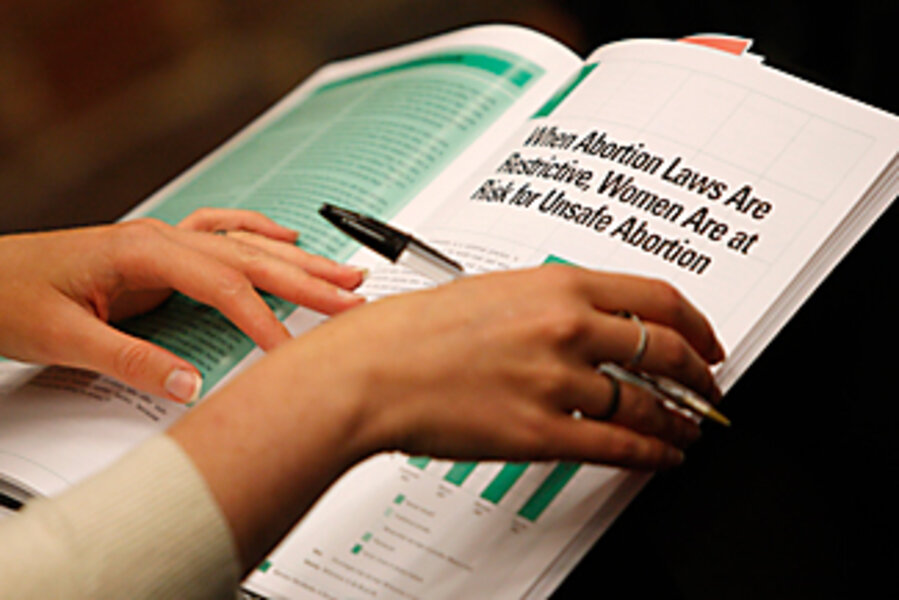Report: Abortions decline worldwide
Loading...
| Washington
Contraceptive use is up worldwide, and with that has come a decline in abortions and unintended pregnancies, according to a report by the Guttmacher Institute released Tuesday.
Between 1995 and 2003, the number of abortions performed worldwide fell from 45.5 million to 41.6 million. The global rate of abortions fell as well: from 35 abortions for every 1,000 women of reproductive age (15-44) in 1995, to 29 per 1,000 women in 2003.
The decline corresponds with a growth in contraceptive use worldwide. The proportion of married women practicing contraception rose from 54 percent in 1990 to 63 percent in 2003, Guttmacher reports. Unmarried, sexually active women are also more likely to be using contraception.
What spurred the increase in contraceptive use?
"In the course of social and economic development, women and couples increasingly want smaller families, and so in a broad sense those are some of the contributors to uptake of contraception," says Gilda Sedgh, a senior research associate at the New York-based Guttmacher Institute and a coauthor of the study.
"That of course is not possible without access to contraception. So it's service provision and international investments in family planning programs that have made it possible."
While both developed and developing regions of the world saw growth in contraceptive use – and decline in abortion and unintended pregnancy – there was greater progress in the developed world. In the developing world, Africa lagged the most.
In sub-Saharan Africa, 1 in 4 married women still faces an unmet need for contraception.
Some women would use contraception, but don't have access. Others won't use it because of concerns about side effects.
"That actually has been increasing in prevalence as a reason for non-use," says Ms. Sedgh. "Over the past couple of decades, women have grown increasingly aware about family planning, but this concern with the methods themselves has increased as an obstacle."
The answer to that dilemma, she says, is access to high-quality family planning programs, which provide a range of methods and counseling and education about the true side effects and how to deal with them.
In another trend, Guttmacher reports that abortion laws are liberalizing. Since 1997, 19 countries have "significantly reduced restrictions in their abortion laws," while 3 countries have "substantially increased legal restrictions." Still, the percentage of the world's reproductive-age women who live under highly-restrictive abortion laws has risen to 40.4 percent, up from 38.5 percent in 1999.
In Africa, 92 percent of women live under highly-restrictive abortion laws. In Latin America, the figure is 97 percent.
The report found that the incidence of abortion does not correlate to its legal status. Legal or not, abortions take place at roughly equal rates. Illegal abortions, however, entail significant safety issues – especially in developing countries.
---
Follow us on Twitter.





